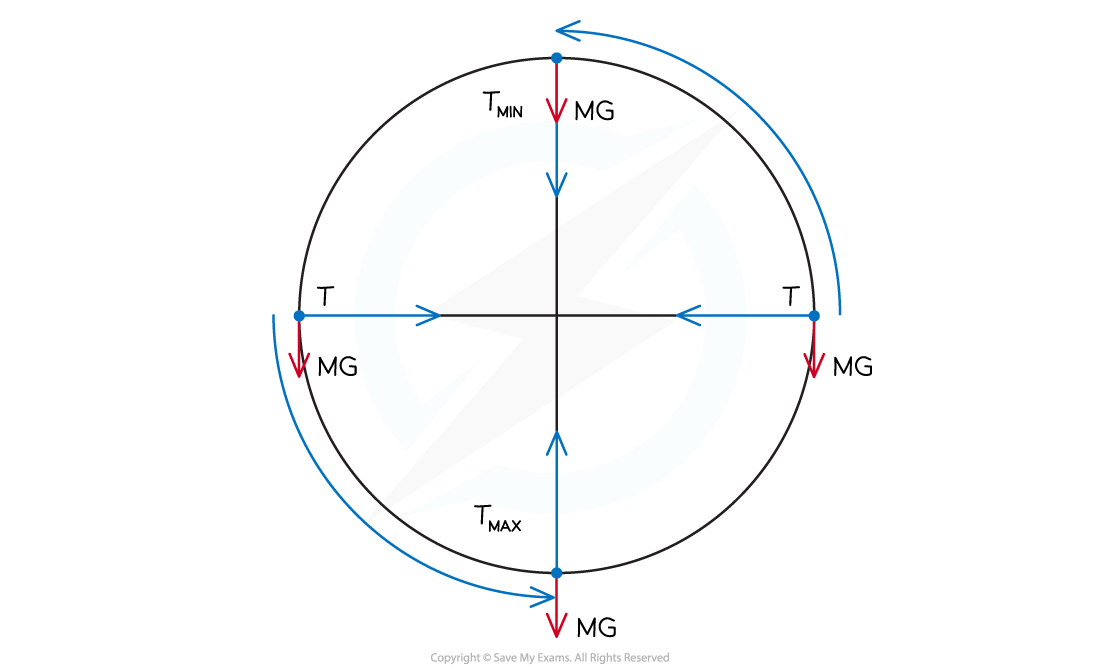Centripetal Force (Edexcel A Level Physics): Revision Note
Exam code: 9PH0
Centripetal Force
Centripetal force can be calculated using any of the following equations:
Where:
F = centripetal force (N)
v = linear velocity (m s-1)
⍵ = angular speed (rad s-1)
r = radius of the orbit (m)

Centripetal force is always perpendicular to the direction of travel
The centripetal force is the resultant force on the object moving in a circle
This is particularly important if there are multiple forces on the object, such as weight
Vertical Circular Motion
An example of vertical circular motion is swinging a ball on a string in a vertical circle
The forces acting on the ball are:
The tension in the string
The weight of the ball downwards
As the ball moves around the circle, the direction of the tension will change continuously
The magnitude of the tension will also vary continuously, reaching a maximum value at the bottom and a minimum value at the top
This is because the direction of the weight of the ball never changes, so the resultant force will vary depending on the position of the ball in the circle

At the bottom of the circle, the tension must overcome the weight, this can be written as:
As a result, the acceleration, and hence, the speed of the ball will be slower at the top
At the top of the circle, the tension and weight act in the same direction, this can be written as:
As a result, the acceleration, and hence, the speed of the ball will be faster at the bottom
Worked Example
A bucket of mass 8.0 kg is filled with water and is attached to a string of length 0.5 m.

What is the minimum speed the bucket must have at the top of the circle so no water spills out?
Answer:
Step 1: Draw the forces on the bucket at the top

Step 2: Write an expression for the centripetal force
The weight of the bucket = mg
At the top of the circular path, the weight and tension act in the same direction, so the centripetal force is
The minimum speed v is when the string is taut but not stretched, so the tension here is zero (T = 0)
Step 3: Rearrange for velocity v and calculate
m cancels from both sides

Unlock more, it's free!
Did this page help you?